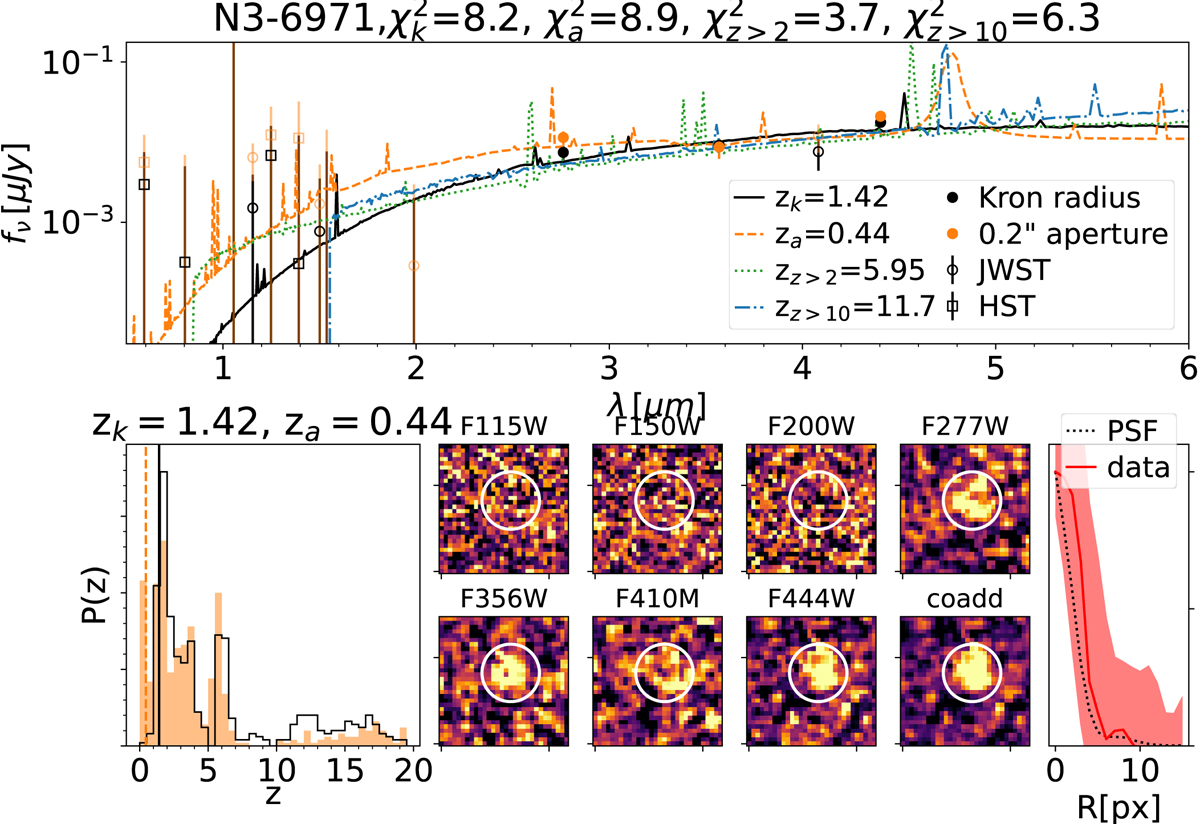Fig. 3.

Download original image
Example of the SED fitting applied to a galaxy (N3-6971) in our F200W-dropout sample. In the top panel we report the photometry and the best fit derived with the 0.2″-radius aperture (orange) and the Kron aperture leaving the redshift free (black), forcing it at z > 2 (green dotted) and at z > 10 (blue dash-dotted). Empty symbols indicate fluxes with S/N < 3. Similarly, in the bottom left panel we report the redshift probability distribution function (PDF) derived with the two photometric sets, with the peak values highlighted by vertical lines. On the bottom, we include eighth cutout images in the JWST filters and in the co-added F277W, F356W, and F444W band images. A white circle indicates the 0.2″-radius aperture. On the bottom right we report the light profile of the target (red solid line and shaded area) compared with the observed PSF of the F444W filter (black dotted line).
Current usage metrics show cumulative count of Article Views (full-text article views including HTML views, PDF and ePub downloads, according to the available data) and Abstracts Views on Vision4Press platform.
Data correspond to usage on the plateform after 2015. The current usage metrics is available 48-96 hours after online publication and is updated daily on week days.
Initial download of the metrics may take a while.


